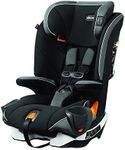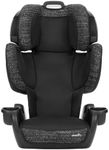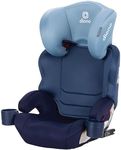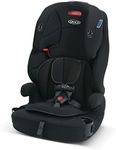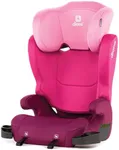Buying Guide for the Best Narrow High Back Booster
Choosing a narrow high-back booster seat is all about finding the right balance between safety, comfort, and fit for your child and your vehicle. These seats are designed to provide extra head and side protection while being slim enough to fit in smaller cars or alongside other car seats. When shopping, focus on how the seat will fit in your car, how it will grow with your child, and how easy it is to use every day. Always check that the seat meets current safety standards and is compatible with your vehicle’s seat belts or LATCH system.WidthWidth refers to how much space the booster seat takes up from side to side. This is especially important if you have a smaller car or need to fit multiple car seats in the back seat. Narrow boosters are typically under 18 inches wide. If you need to fit three seats across or have a compact vehicle, look for the slimmest options. If space is less of a concern, a slightly wider seat may offer more comfort.
Height AdjustmentHeight adjustment means how much you can raise or lower the headrest and back of the booster as your child grows. This is important because a properly adjusted seat will provide the best protection and comfort. Some boosters have multiple height settings, while others have fewer. If your child is tall or you want the seat to last several years, look for a model with a wide range of height adjustments.
Weight and Height LimitsWeight and height limits tell you the minimum and maximum size of child the booster can safely accommodate. This is crucial for safety, as using a seat outside these limits can reduce its effectiveness. Boosters usually start at around 40 pounds and go up to 100-120 pounds, with height limits often around 57 inches. Choose a seat that matches your child’s current size and will allow room to grow.
Side Impact ProtectionSide impact protection refers to the extra padding and structure around the head and torso areas. This feature is important because it helps protect your child in the event of a side collision. Some boosters have basic padding, while others have reinforced wings or energy-absorbing materials. If you want maximum safety, especially for younger or smaller children, look for enhanced side impact protection.
Ease of InstallationEase of installation describes how simple it is to securely place the booster in your car. Some boosters use the vehicle’s seat belt only, while others also have LATCH connectors to keep the seat in place when not occupied. If you plan to move the seat between cars or want a hassle-free setup, look for clear instructions and features that make installation straightforward.
Seat Comfort and PaddingSeat comfort and padding refer to how cushioned and supportive the booster is for your child. This matters for longer trips or daily use, as a more comfortable seat can make car rides more pleasant. Some boosters have minimal padding, while others offer plush, contoured seats. If your child will spend a lot of time in the seat, prioritize comfort.
Adjustable Armrests and Cup HoldersAdjustable armrests and cup holders are convenience features that can make the booster more user-friendly. Armrests can help with comfort and make it easier for your child to buckle themselves, while cup holders are handy for drinks and snacks. If your child values these features or you want to make car rides easier, look for boosters that include them.

